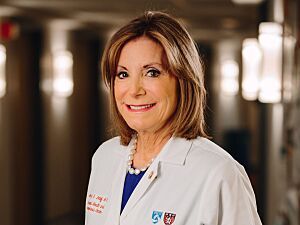As the most common metabolic bone disease in the United States and worldwide, osteoporosis is a significant public health problem. And yet, it is also an alarmingly underdiagnosed and undertreated disease.
To enhance the prevention, risk management, diagnosis, and treatment of osteoporosis in postmenopausal women and men aged 50 years and older, the Bone Health and Osteoporosis Foundation (BHOF) published a revised “Clinician’s Guide to Prevention and Treatment of Osteoporosis” in April 2022. BHOF, formerly the National Osteoporosis Foundation, published the first Clinician’s Guide in 1999 and made updates in 2014.
Endocrinologist Meryl S. LeBoff, MD, chief of the Calcium and Bone Section and the Distinguished Chair in Skeletal Health and Osteoporosis in the Division of Endocrinology, Diabetes and Hypertension at Brigham and Women’s Hospital, served as lead author of the latest Clinician’s Guide. Noting that osteoporotic fractures are associated with subsequent fractures and other adverse events, she stresses the importance of carefully evaluating and treating any patient 50 years or older presenting with a new hip, spine, wrist or pelvic fracture.
“It’s been shown that we have effective therapies for osteoporosis that prevent fractures and improve clinical outcomes and quality of life,” she says. “As part of routine care in both the outpatient setting and the hospital, it’s critical to identify patients who have osteoporosis, advance their clinical care, improve outcomes, and reduce the risk of subsequent fractures, disability, and premature mortality.”
Focused on Serving the Gatekeepers of Care
Dr. LeBoff is the founding director of the Brigham’s Skeletal Health and Osteoporosis Center and the Bone Density Unit and a professor of medicine at Harvard Medical School. She focuses her research on the effects of vitamin D and other nutrients on bone health, bone density and body composition measures, and osteoporosis.
The updated Clinician’s Guide is the culmination of several years’ work by Dr. LeBoff and a panel of bone health experts. It summarizes the latest research and recommendations on the prevention, risk assessment, diagnosis, and treatment of osteoporosis. In addition, it covers universal bone health recommendations, fracture risk thresholds for pharmacologic intervention, FDA-approved treatments for osteoporosis, and secondary fracture prevention, among other topics.
“We focused on making this clinically applicable to a broad range of physicians—including primary care physicians, orthopedic surgeons, endocrinologists, and rheumatologists, who are often the gatekeepers of care for osteoporosis and fractures,” Dr. LeBoff says.
A ‘Clarion Call’ for Taking Action Against a ‘Silent Disease’
Osteoporosis is a “silent disease” that typically is not diagnosed until a fracture occurs, the authors observed in the Clinician’s Guide. “At-risk patients are often not screened to establish fracture probability and not educated about fracture prevention,” they wrote. “Most concerning, the majority of highest risk women and men who have a fracture(s) are not diagnosed and do not receive effective, FDA-approved therapies. Even those prescribed appropriate therapy are unlikely to take the medication as prescribed.”
One manifestation of this treatment gap can be seen in hip fractures. According to Medicare claims data, the age-adjusted incidence of hip fractures steadily declined from 2002 to 2012. From 2012 to 2015, however, these numbers plateaued.
The guide’s authors advocate for various approaches to address what they call “a crisis in patient care.” These range from “engaging physicians, governmental, and public health organizations” to “improving insurance coverage for key fracture prevention services” and “adopting quality measures to incentivize clinicians, hospitals, and health systems to routinely screen and treat high-risk patients.”
“There’s a clarion call for evaluating patients for osteoporosis to make sure they’re treated,” Dr. LeBoff says. “For example, more than 90% of patients who come into an emergency room with symptoms of cardiovascular disease are evaluated and treated for their underlying heart disease. Whereas with osteoporosis, some studies show that only 20% are evaluated and treated for their osteoporosis.“
A Career-long Commitment to Advancing Osteoporosis Research and Care
Dr. LeBoff’s role in revising the Clinician’s Guide extends her interest in advancing osteoporosis research and care, a passion sparked by her fellowship at the Brigham several decades ago.
In recognition of her work in osteoporosis, the BHOF named Dr. LeBoff the recipient of the Lawrence G. Raisz, MD, Memorial Lecture Award in June 2022. The annual award honors a “clinical scientist who is dedicated to the prevention, diagnosis and treatment of osteoporosis and has made a significant contribution to the field of study in osteoporosis and bone metabolism.”
“Larry Raisz was an extraordinary researcher and clinician and a strong advocate for osteoporosis research and education,” Dr. LeBoff says. “It was a great honor to be selected for this award and to give the plenary lecture at the BHOF’s annual symposium, where I had the opportunity speak on ‘Optimizing Osteoporosis Prevention and Treatment: The Bone Health and Osteoporosis Foundation’s Clinician’s Guide 2022.'”
